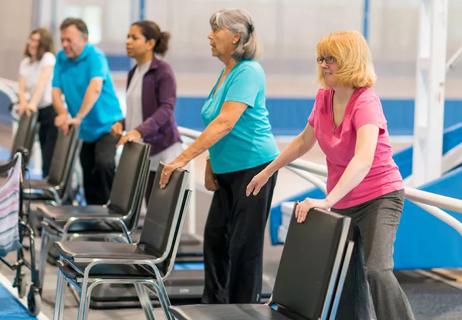The short answer from a rheumatologist

Q: Is there anything I can do to prevent osteoarthritis? Or is it just inevitable?
Advertisement
Cleveland Clinic is a non-profit academic medical center. Advertising on our site helps support our mission. We do not endorse non-Cleveland Clinic products or services. Policy
A: Osteoarthritis may seem like something we have to put up with as we age. It may not be possible to completely stop the underlying cause of osteoarthritis, but that does not mean there’s nothing you can do. Osteoarthritis develops when cartilage, a cushioning tissue that covers the ends of bones at joints, starts to deteriorate. This can cause pain, stiffness and swelling to varying degrees.
One risk factor for painful osteoarthritis is having a BMI > 25 (having overweight) or a BMI > 30 (having obesity). Your joints are meant to withstand a certain amount of force. But every pound of excess weight adds two to four pounds of pressure on your knees. By losing 20 pounds, you’re taking 40 to 80 pounds of force off of them. Losing weight can help to at least slow down the progression of osteoarthritis.
You can also protect joints by staying physically fit, in particular by strengthening the muscles that surround vulnerable joints. Strong muscles mean less stress on the joint itself. Regular exercise of all kinds, including aerobic activity, helps keep joints healthy. That’s because the most mobile joints in the body contain a liquid called synovial fluid. When a joint is compressed, this fluid washes over the joint, providing lubrication and nourishment.
Advertisement
Other tips for keeping joints healthy include not smoking, staying well hydrated (water is a major component of cartilage) and eating a healthy diet. One study, published in Annals of the Rheumatic Diseases, found that people who ate the highest amounts of fiber were less likely to have symptoms of knee osteoarthritis.
— Rheumatologist Chad Deal, MD
Advertisement
Learn more about our editorial process.
Advertisement

An expert explains the potential benefits

Simple exercises to build balance and strength

Eating well can help reduce inflammation when you have endometriosis

Exercising and stretching your lower back, hamstrings, hips and quads can greatly improve your physical well-being

These creams that you apply to your skin can actually help reduce localized pain, swelling and inflammation

Doing it too often or too forcefully can cause issues, including loose joints over time

While an ultrasound shows your muscles and tendons, an MRI also shows your joint cartilage, bones and heart chambers

Research doesn’t show any benefits to wearing copper bracelets — but your experience may vary

If you’re feeling short of breath, sleep can be tough — propping yourself up or sleeping on your side may help

If you fear the unknown or find yourself needing reassurance often, you may identify with this attachment style

If you’re looking to boost your gut health, it’s better to get fiber from whole foods